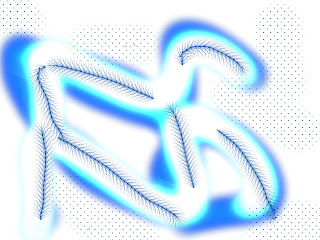The more effortlessly you can align, optimize, integrate, the closer you can accelerate performance and lead changes consistently.
Knowledge is path-dependent: Everything exists in a constant state of change and knowledge of an evolving thing must keep updated. With the exponential growth of information, the boundary of knowledge domains has a blurred scope, knowledge does not stand still, it is path-dependent, and expanded in the continual base. Knowledge can either enhance cognitive understanding, but sometimes outdated knowledge misleads or causes distraction. Knowledge is not an isolated fact but needs to flow and transfer for achieving its business value. That means to discover an opportunity, you should have previous knowledge in the field to be able to deepen understanding and keep updating knowledge for capturing fresh insight for enabling effective problem-solving.
Managing information and knowledge is not just a technological problem, but a human problem, the knowledge path dependence can be traced back from historical or sociological perspective. Part of taking knowledge seriously as a corporate asset involves assigning responsibility for knowledge within the organization, maintaining and improving knowledge flow and ensuring knowledge coherence. You need to not only assimilate the existing knowledge, but also have to keep updating knowledge, generate new knowledge and become the knowledge value creator to benefit your organization. The effectiveness of knowledge management directly impacts on the performance, responsiveness, and maturity of the business.
Business capability is path-dependent: Business capability is the ability to do things and achieve certain results. Capabilities may include dependencies; one is part of another or depends on another. A firm's capabilities today are the result of its history and this history constrains what capabilities the firm can perform in the future. It involves corporate learning and acting continuum. Thus, such business capabilities cannot be bought in the marketplace completely. A value stream view should allow you to demonstrate the capabilities necessary to deliver each and every product/service and then the capabilities that are necessary to support them, highlight the value of having a good understanding of current and future capabilities, and develop and improve the overall organizational competency.
The value of capability maps is to provide a useful tool to visualize the end-to-end enterprise, understand relationship/dependency between different capabilities, and make an objective assessment of their business capability maturity. Building an extensive and real-time digital organization is about developing the lego-like modular capability, and crafting scalable capabilities with quality and reusability. The strong capability mapping includes capability dependency identification, gap identification to ensure seamless capability integration and portfolio coherence, with the ultimate goal to implement a capability-based strategy.
The organizational design is path-dependent: Given “VUCA” digital new normal, today’s business is often operational in crisis and conflict environments. To improve the organizational maturity from functioning to firm to delight, organizational design should be part of the digital strategy management. The overly rigid organizational hierarchy will stifle changes and decelerate business flow. The organizational structure carries inherent business capabilities as to what can be achieved within its frame to enable a well-defined business strategy. It also reveals the corporate culture – how the decisions get made, as well as how the work gets done across the organization. At the business level, silo creates barriers that surface between different departments within the organization, it further causes miscommunication between varying shareholders, between top management and the rest of the organization, as well as between various business functions.
Fundamentally, the “organizational design problem” would be to build a great mix of organizational elements that enable the organizational interdependence, enhance cross-functional communication and collaboration, and harness a culture of learning and innovation. What works and what doesn´t, depends on the nature of the organizational interdependence. Organizational designs, culture, process are all correlated. The successful process improvement initiatives should have representation and input from organizational design management. You have to make sure that the organizational design is not only in alignment with the organizational culture, but also helps to cultivate a desired culture and improve business effectiveness, so collaborative interdependent organizations can reach a higher state of business maturity.
Many companies may be in business for many years but have not matured in their management disciplines. Surviving and thriving in today’s business dynamic requires structural flexibility, cross-functional collaboration, inter-relational process to reduce business frictions and deal with conflicts or disruptions that arise. Discovering interdependent business elements and tracking path-dependent factors are all crucial steps in leading business success in the long run. The more effortlessly you can align, optimize, integrate, the closer you can accelerate performance and lead changes consistently.












































0 comments:
Post a Comment